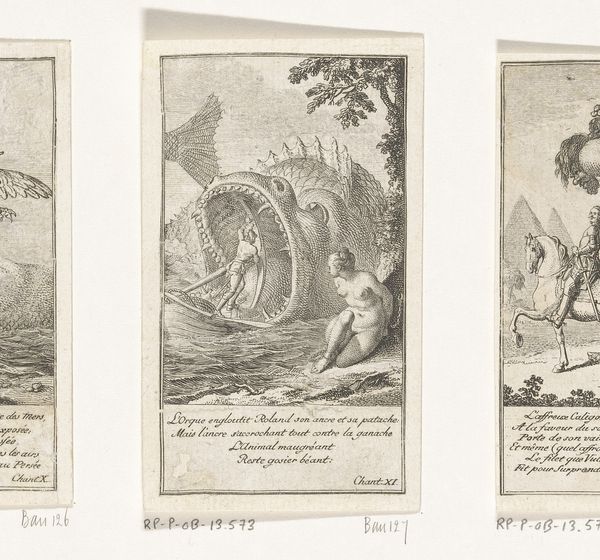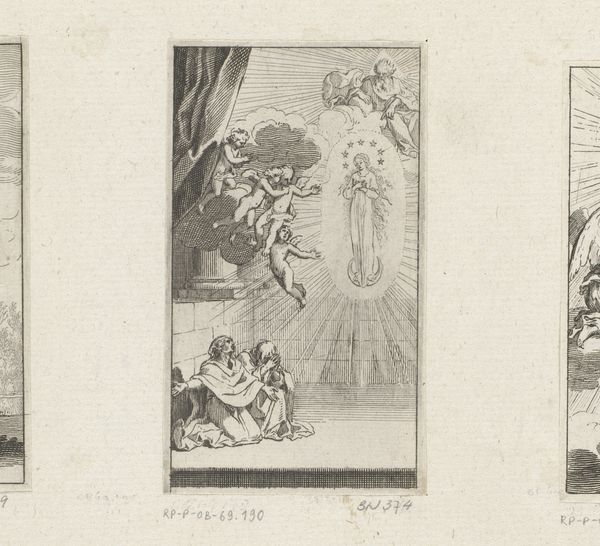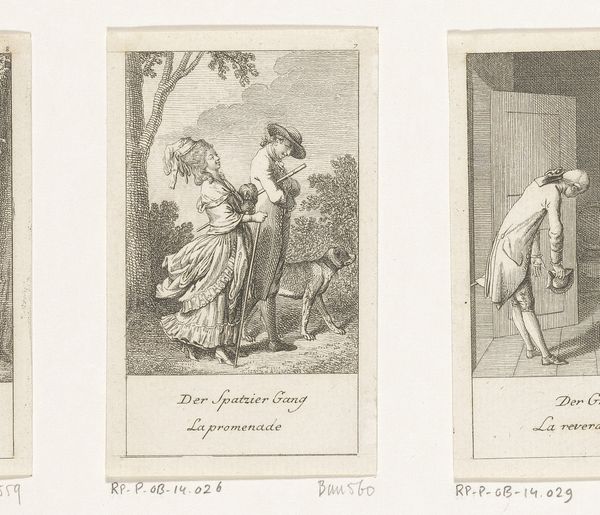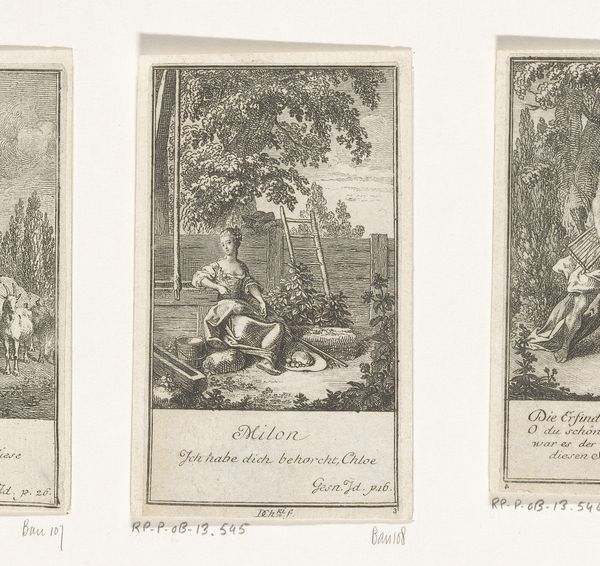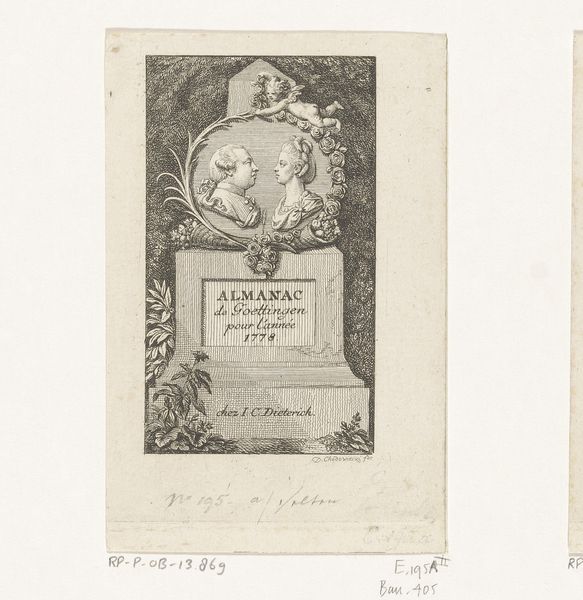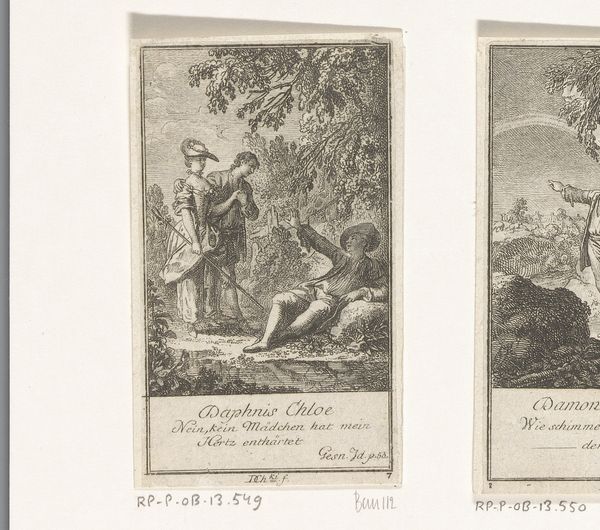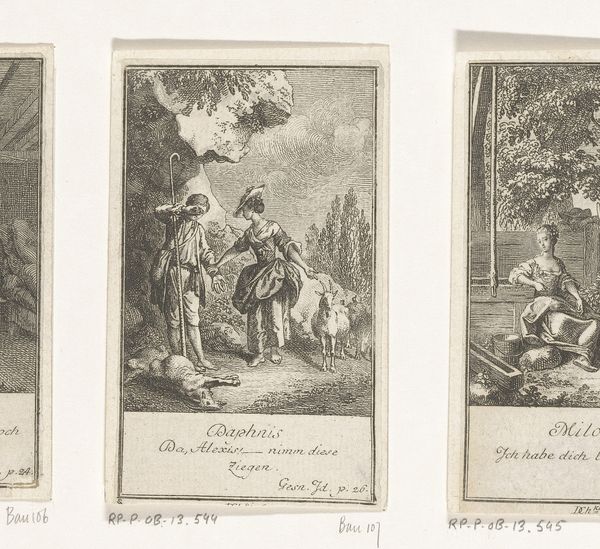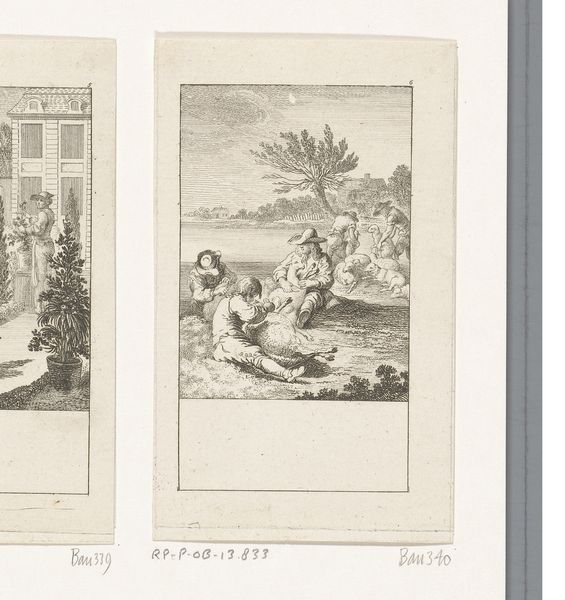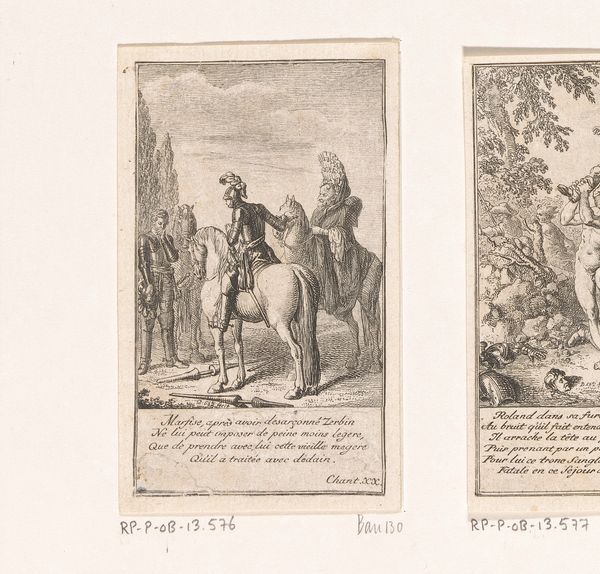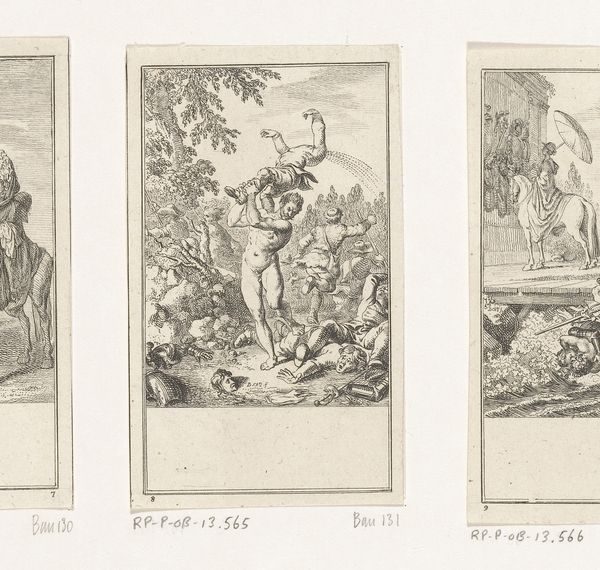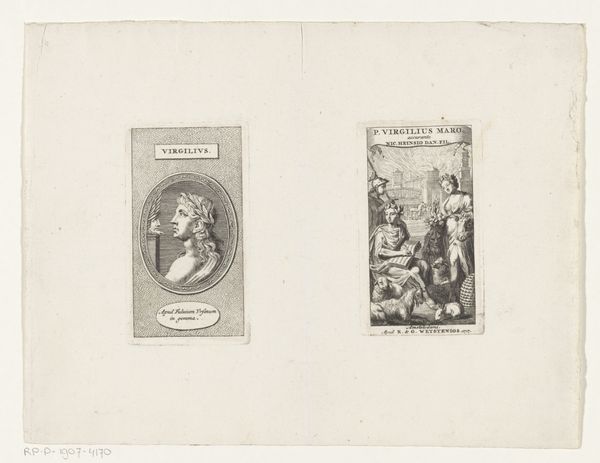
Dimensions: height 110 mm, width 63 mm
Copyright: Rijks Museum: Open Domain
Curator: Here we have Daniel Nikolaus Chodowiecki’s “Title Page with the Four Seasons,” an engraving dating back to 1778. Editor: It's striking how this black and white engraving manages to evoke a light and airy feel. It's as though the figures are floating. Curator: Indeed. Chodowiecki masterfully uses line weight and density to suggest depth and form. The allegorical figures, each representing a season, are delicately rendered. Note how the composition is arranged vertically, guiding the eye from the top figure representing summer down to winter. Editor: You can almost feel the different climates; this work truly plays to the intellectual sensibilities prevalent during the Romantic era by emphasizing subjective emotional experiences and a connection to nature. The softness in the line work, in this piece's medium—this sets a different aesthetic tone in relation to others that focus more on a strict line or shading to convey visual information. Curator: Absolutely. The work was commissioned as a frontispiece for an almanac, so consider its social function – informing, orienting and being genealogical for the public during the year of its production. It’s also interesting to reflect upon its materiality – as a print. Chodowiecki created something reproducible. Editor: Reproducible art democratizes information access, but consider this too—each individual impression also changes as the printing plate degrades over time, subtly influencing a different emotional experience, I suppose! A different context is provided, therefore. Curator: And also a reminder of the art’s vulnerability. Let's note that the cherubic figures lend a sense of classical elegance while, I'd argue, the somewhat severe rectangular framing keeps this firmly within the enlightenment pursuit of knowledge, contained. Editor: Perhaps we are both finding traces of the Baroque era? As for my takeaway – what once was then becomes newly considered today! Curator: Beautifully said! I feel as if the dialogue helps bring a deeper recognition to both artistic intention, its period, and a modern evaluation of its role, not just of art history, but our cultural experience.
Comments
No comments
Be the first to comment and join the conversation on the ultimate creative platform.
